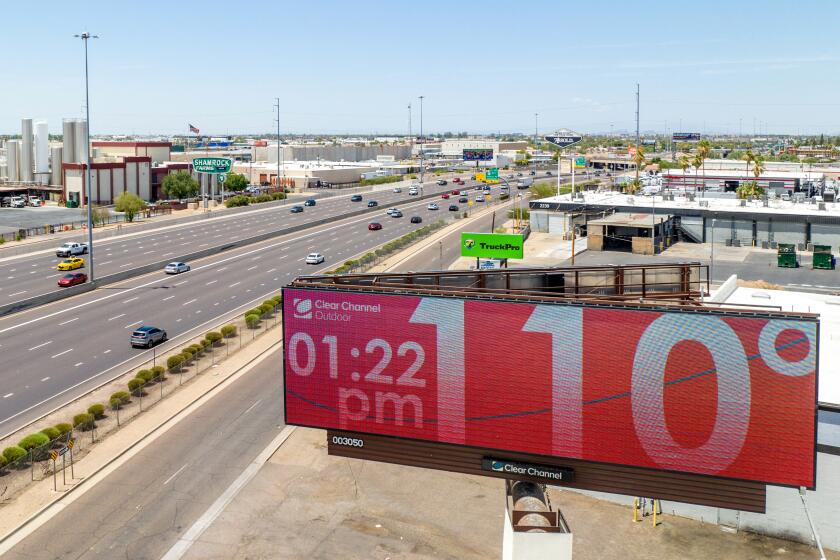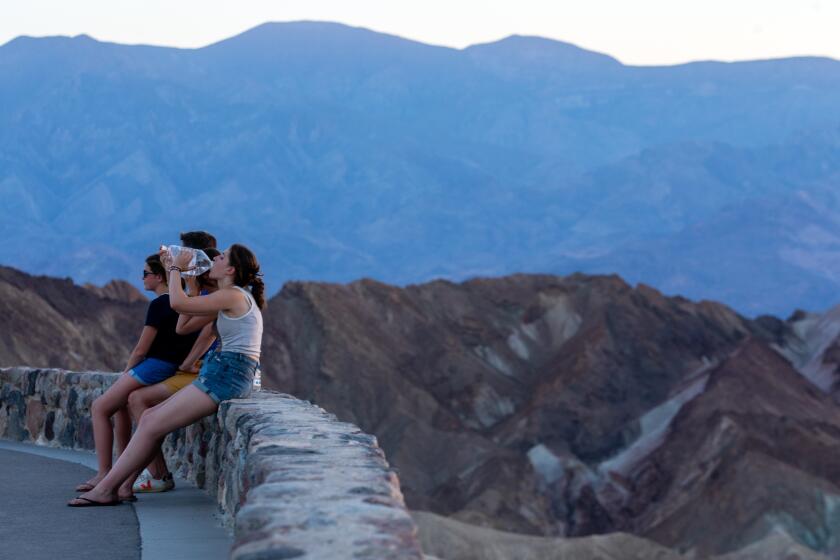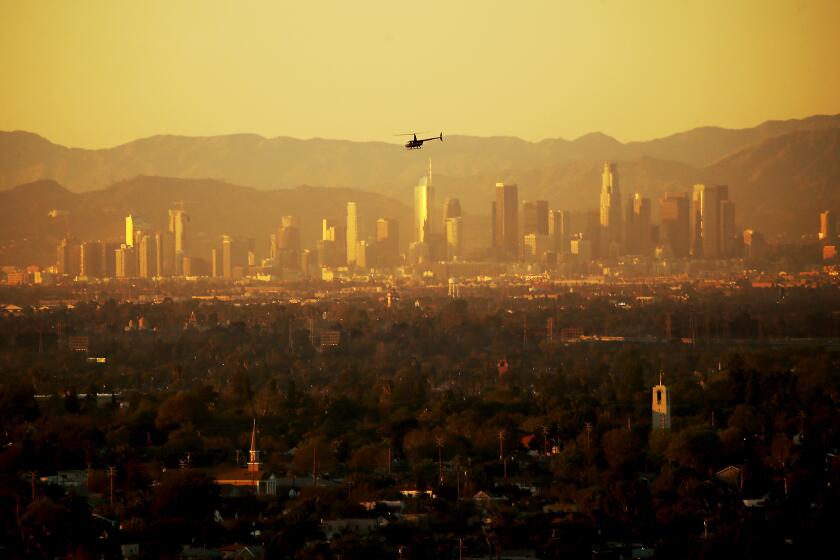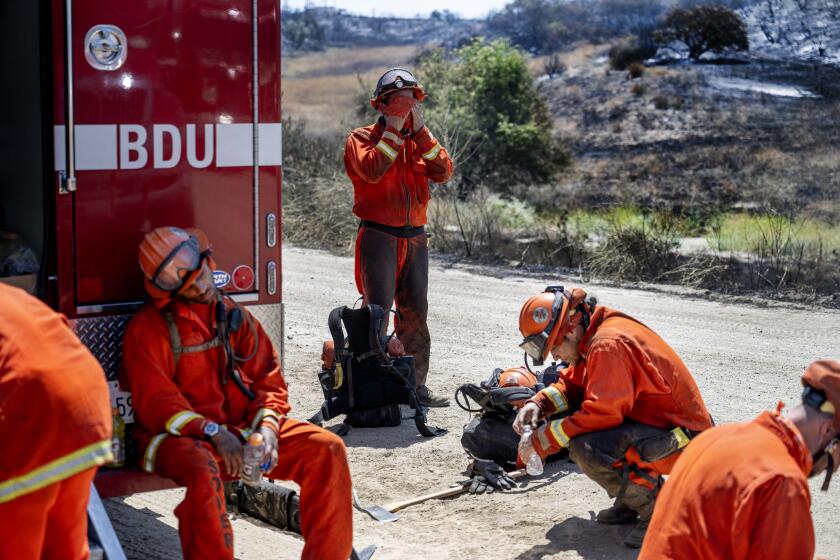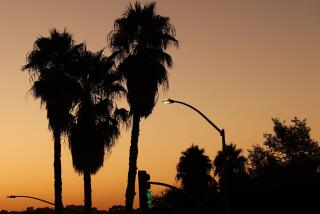Hellish heat leaves Southwest in misery: Fainting, broken cars, sizzling sidewalks

- Share via
PHOENIX — An unrelenting heat wave that has blanketed the the Southwestern U.S. continued to break records Wednesday, inflicting misery in major cities and offering what experts described as a disturbing glimpse into the future as human-caused climate change increases the frequency and duration of extreme heat events.
Places such as Las Vegas and Phoenix have always endured broiling summers. But the scale and duration of this heat wave has brought new levels of suffering, from sizzling sidewalks to broken-down cars and passed-out airline passengers.
Here in Phoenix, the mercury inched to 119 degrees Wednesday, a daily record. It was the 20th consecutive day that the temperature topped 110 degrees — two days more than the city’s previous record, 18 consecutive days over 110 degrees, set in 1974.
For residents living with the sustained heat, it was a terrifying wake-up call and a test of how much people can endure.
“I’ve got to try to stay inside and stay cool,” said Christopher Duggan, who was sitting at a cooling center run by the Salvation Army in downtown Tempe on Tuesday afternoon. Nearby, about 10 people quietly rested in the AC, some of them laying on the tile floor, their eyes open but unfocused.
Phoenix smashed a record for major U.S. cities Tuesday, the 19th consecutive day that the temperature reached 110 degrees.
“It was a blessing that they have a cooling place. It’s hot out there,” Duggan said. He had suffered a work injury and was seeking housing; he had no other place to go to escape the heat.
But forecasters say even more warmth is on the way. Phoenix could soar as high as 120 degrees by Friday, according to the National Weather Service.
In Las Vegas, officials are similarly bracing for the possibility that the city will break its 10-day record for consecutive days over 110 degrees by the end of this week.
“It’s been hot and it will continue to be hot,” said Chris Outler, a meteorologist with the weather service in Las Vegas. Temperatures on Wednesday were expected to hit 110 degrees, and could climb as high as 115 degrees Friday and Saturday.
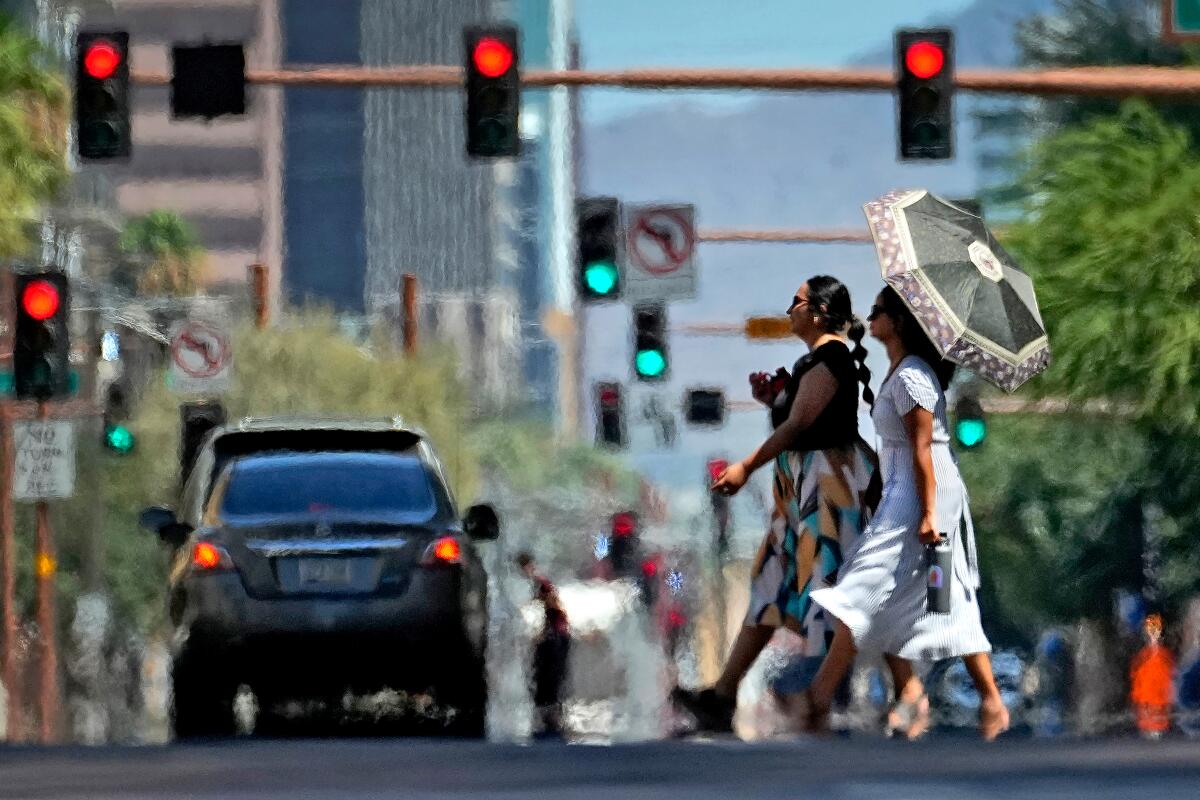
The heat has been so oppressive that a Delta Airlines flight from Las Vegas’ Harry Reid International Airport was canceled Monday after several passengers and crew got sick from the heat and fainted while awaiting takeoff in 111-degree weather.
Area hospitals are also seeing an increase in heat-related illnesses among adults and children, according to Marissa Mussi, a spokeswoman with the Sunrise Hospital group in Las Vegas.
Added to that is an increase in pavement burns, according to Yasmin Conaway, burn program manager at the UMC Lions Burn Care Center. The center, located not far from the Las Vegas Strip, has admitted about 11 patients for pavement burns so far this month.
“The asphalt, the concrete, all of these hot surfaces can get up to 170 degrees, and that only takes seconds to cause a deep enough burn to require hospitalization,” Conaway said. She noted that many burn patients may have passed out on the pavement due to dehydration, intoxication or other challenges, which lengthens their exposure and complicates their treatment.
Death Valley, one of the most extreme places on the planet, is already seeing the impact of climate change, with summers even hotter than usual.
Forecasters say the heat is being driven by a large high-pressure system that has parked itself over the Southwestern states. The onset of El Niño, a climate pattern associated with warmer conditions, is also a contributing factor.
But those elements are also occurring against the backdrop of human-caused climate change, which is driving global temperatures ever higher. Between 1971 and 2000, Las Vegas averaged only three days per year with a heat index above 105, said Kristina Dahl, a principal climate scientist with the Union of Concerned Scientists.
Now, “there’s no real end in sight — that heat dome is just in place,” she said. “That’s what’s striking to me, is we’re not breaking these records by just a day or two, we’re breaking them by a large margin.”
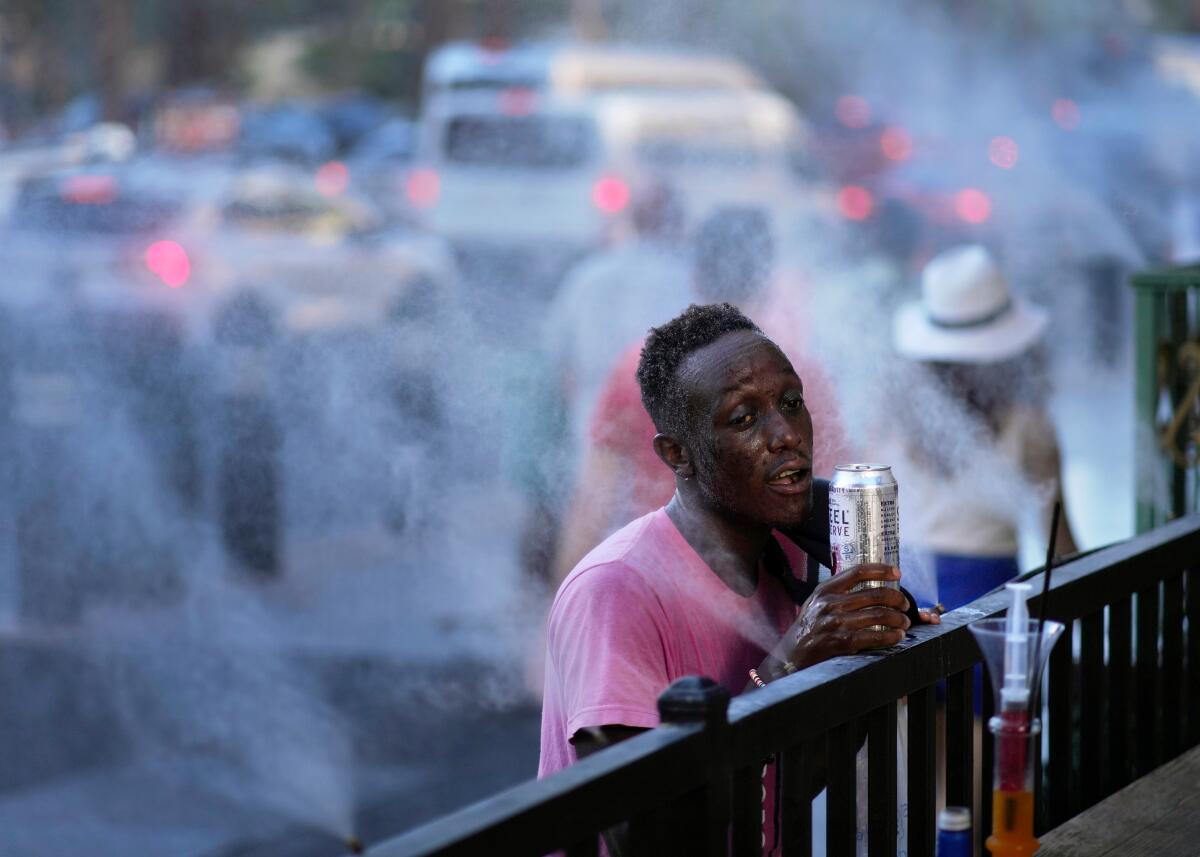
The burning of fossil fuels isn’t only driving daytime temperatures to new extremes, but also keeping nights far warmer than normal, offering people little chance for relief. The Phoenix Sky Harbor Airport recorded a temperature of 110 degrees at midnight Wednesday.
“A lot of this is expected — it is what our models predicted would happen,” Dahl said. “But speaking for myself, as someone who has seen this coming for a long time, it still packs a much bigger emotional punch than I ever expected it to. To see it playing out in my lifetime, to see the real, horrific struggles people are going through with extreme heat — I think the impacts are more severe than I would have anticipated.”
Indeed, extreme heat is among the deadliest and most devastating effects of climate change. It is also one of the most inequitable, disproportionately affecting low-income communities and communities without tree canopies or adequate shade, Dahl said.
Even in places such as Phoenix that have adapted to extreme heat, temperatures like these can be life-threatening. A recent study published in the journal Environmental Science & Technology found that if Phoenix experienced a blackout during a heat wave such as this current one, half of all city residents would need hospitalization, and the city’s death rate would increase over 700 percent.
Ozone air pollution can lead to problems with respiratory health, including asthma attacks, trouble breathing and lung damage.
And while the highest temperatures are currently in Arizona and Nevada, California is also baking from the heat dome. Bakersfield could climb to 109 by Saturday, and Fresno 107. Such conditions can create particular danger for outdoor farmworkers in the region, who are 20 times more likely to suffer a heat-related death than the average U.S. worker.
The heat in California has contributed to several wildfire ignitions in recent days, and state officials are urging people to stay hydrated, head to cooling centers and watch out for elderly relatives and neighbors. Over the weekend, the California State Fair in Sacramento canceled its opening weekend of horse racing due to high temperatures.
At Aram’s Auto Repair in Fresno, the extended spell of triple-digit heat has brought more calls for service — but the technicians, facing the same heat that kills car batteries, zaps engines and fries cooling systems, are struggling to keep up with demand, said Billy Catching, the shop’s general manager.
“Not only do we have customers that are having issues, but the efficiency of the technicians in the shop physically goes down,” said Catching, who suffered from his own bout of heat exhaustion and missed work after tinkering with his own car this weekend. One technician at his shop recently quit and moved to Oceanside after working in the heat became too much, he said.
Southern Californians can expect another day of hot weather as a heat wave covers the region, bringing triple-digit temperatures and increased fire danger.
In Southern California, residents also continued to feel the heat, with a high of 89 degrees in downtown Los Angeles and temperatures in Woodland Hills, Canoga Park, Northridge and other parts of the San Fernando Valley reaching 101. By Saturday, temperatures in the valley are expected to rise about five degrees.
For some, high temperatures are still a novelty in a rapidly changing world. Heat-seeking tourists flocked to Death Valley National Park this week, where the mercury neared 130 degrees.
“It’s my first trip to the U.S., and I am very happy,” said Ewa Bulisz, who planned her trip to the American Southwest from Lublin, Poland, after beating cancer. “It’s hot, but it makes me feel strong.”
Back in Phoenix, others weren’t so sure. Dave Martin, 58, who owns Martin’s Auto Repair in Phoenix, said business is up compared to last July, but that the temperature is getting more and more unbearable.
“I lived here for a long time and I don’t remember it being it this consistent with hot days over over 110 degrees,” he said. “It’s been pretty brutal.”
More to Read
Sign up for Essential California
The most important California stories and recommendations in your inbox every morning.
You may occasionally receive promotional content from the Los Angeles Times.
